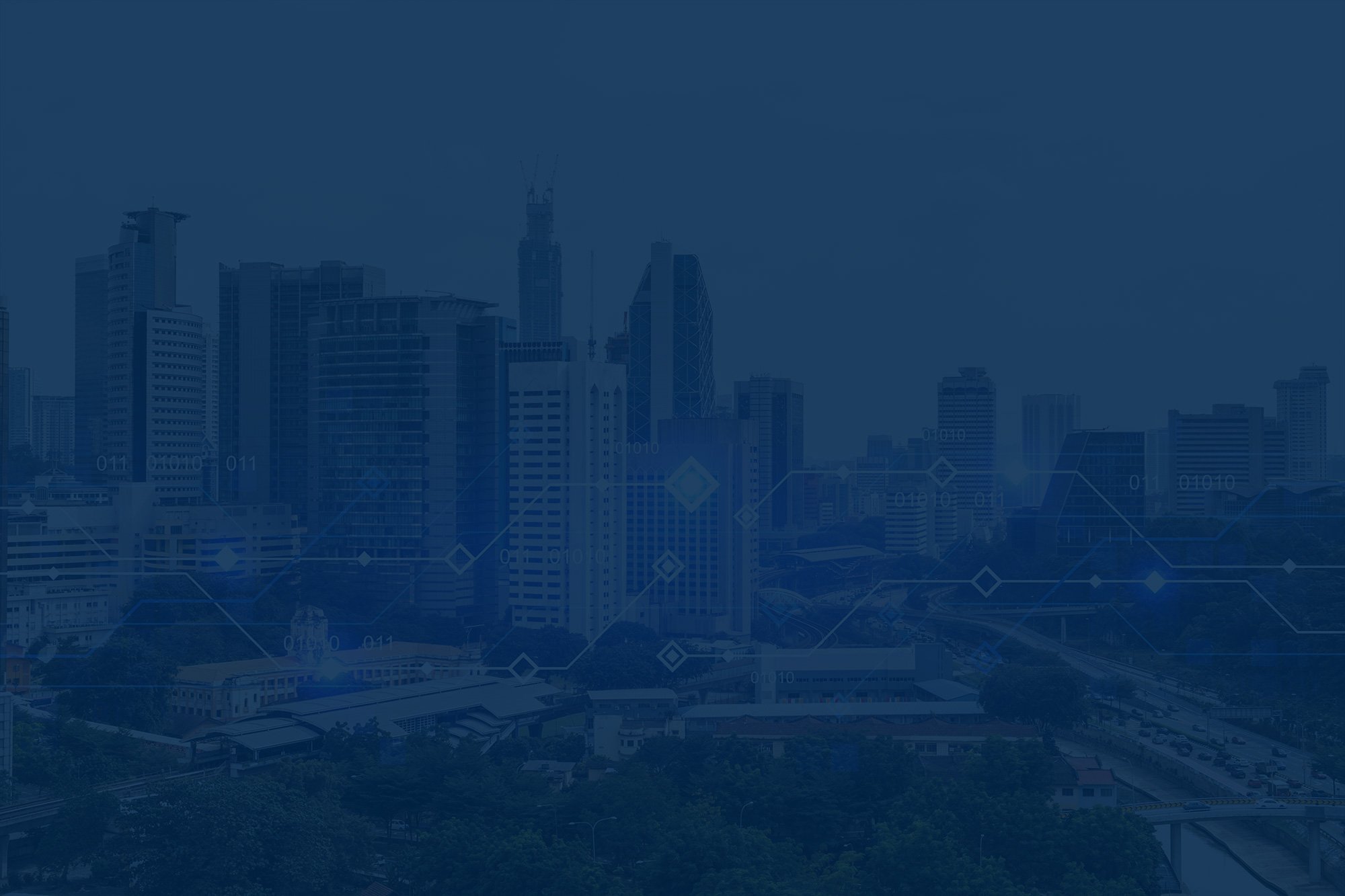

The Future is Here : Your Complete Guide to Digital Twins
Learn How Digital Twins Can Revolutionize Asset Management
Table of Contents
Introduction
Imagine having, right at your fingertips, an exact digital replica of a utility pole located 2,000 miles away. How much time and money could you save by minimizing field trips to gain intelligence on asset data? With a digital twin, this can be a reality.
The concept of a digital twin is not new. However, advances in technology have made new applications available—with wide-ranging implications for promoting efficiency.
As the technologies available to create digital twins have become less expensive and more sophisticated, more industries are exploring their uses. This is especially true in the utility and communications industry, where updating old processes can often be the change needed to meet tight regulatory timelines and adhere to safety protocols. Companies that take advantage of this opportunity stand to gain competitive ground.
First and foremost, the quality of the data collection and data management is crucial to building the best possible digital twin and achieving maximum savings and efficiency.
In the current joint use landscape, several companies are using some form of digital twin to speed up and streamline applications/permitting, review, and construction processes for pole attachments. The buildout of 5G networks nationwide involves placing thousands of attachments on utility poles, streetlight poles, and buildings to create the density necessary to support new technology, so streamlining is more important than ever.
As with any collaborative endeavor, confusion and uncertainty are the arch enemies of progress. Without a system designed for collaboration, the benefits of a digital twin can get lost. That’s why it’s important for everybody involved in making joint use decisions to have a clear picture of what equipment is out in the field as well as its condition.
Fortunately, with collaborative software and digital twins to provide the crucial picture of the assets shared by joint use partners, companies can position themselves better for the future. It starts with understanding exactly how digital twins work and what the implications are for improvement, and that’s precisely why we’ve created this guide.
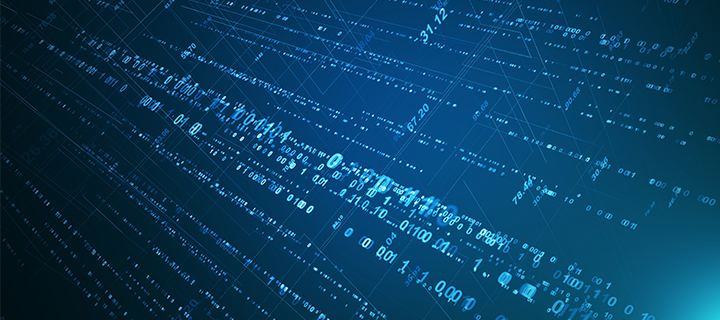
Chapter 1 – What Is a Digital Twin?
Defining a digital twin is a bit complicated because various types exist. The simplest answer is that it’s a digital replica of a physical object or asset (although it also could represent a more abstract system). A digital twin can also be described as a virtual model or a cyber representation.
A digital twin is interactive, and it can be a digital replica of either a physical object or an intangible process. For our purposes, let’s examine the definition in terms of a physical asset. It could include detailed digital copies of physical assets such as utility poles, pole attachments, cables, transformers, nodes, substations, conduit vaults, and communications infrastructure. Understand that the application for digital twins can extend beyond the utility and asset management industry. For instance, the object duplicated could also be a room, a building, an automobile, a spacecraft, a hill, a riverbed, or even a human heart.
In any case, building a digital twin requires accurate data on the physical objects involved that must be collected and then fed into computer software. When managed properly, this process can provide detailed, measurable electronic duplicates that are useful in a variety of ways to multiple shareholders.
The Technology Behind a Digital Twin
An effective digital twin requires a lot of data, which can be gathered by various methods. Two of the commonly used methods are photogrammetry, which combines high-resolution photography with sensors that provide a set of measurements, and LiDAR (Light Direction and Ranging), which pairs rapid pulses of laser light with sensors to measure objects and their surroundings. The data is fed into software, organized, analyzed, and processed by someone with expertise in the field.
Field technicians can use high-resolution digital cameras and handheld laser scanners to record information about an object and its physical environment. For example, they might collect data on any given utility pole, the cables and equipment attached to it, the surrounding terrain and vegetation, plus any additional information based on first-hand observations.
The initial measurements, though high-tech themselves, are just the beginning. Sophisticated software can use the data obtained to construct an accurate "digital copy" of utility poles, transformers, substations, underground conduit vaults—any part of a company’s crucial assets, as well as other companies’ equipment attached to those assets.
Digital twins are created by stitching all this collected data together, combining many pieces of data to create the virtual model.
Most often a digital twin takes a visual form, ranging from a point cloud to a measurable 3D photographic copy. If desired, dozens or even hundreds of individual photographs can be stitched together digitally into a single three-dimensional image. However, the finished product could be simply a highly detailed set of data on a physical asset.
What Are the Types of Digital Twins?
The form a digital twin takes will vary based on the type and amount of data collected, as well as the methods used to collect the data. The form can also change depending on the ways data is processed and how the company needs to use the information.
Regardless of their forms, all digital twins have these common advantages: they can be accessed quickly, at any time, from the convenience of your office.
The types of digital twin a company chooses to create depend on its purposes. Let’s review some of the most common types:
- Asset digital twin – For a utility company, an asset digital twin could be a reproduction of a utility pole, for example. This type of twin would include complete measurements for the pole and all equipment or cables attached to it. If desired, the representation also could encompass the pole’s immediate surroundings, such as nearby buildings, ground surfaces, and trees.
- System or operational digital twin – This type of digital twin is larger in scale and could encompass an entire facility or entire network of physical assets. This kind of big picture allows for sophisticated analysis and predictive scenarios. Of course, this will require a large amount of accurate data in order for the digital twin to be useful.
- Process digital twin – In contrast to the other types, this kind of digital twin focuses on logistics and processes, not the equipment itself. However, it may still incorporate aspects of physical digital twins.
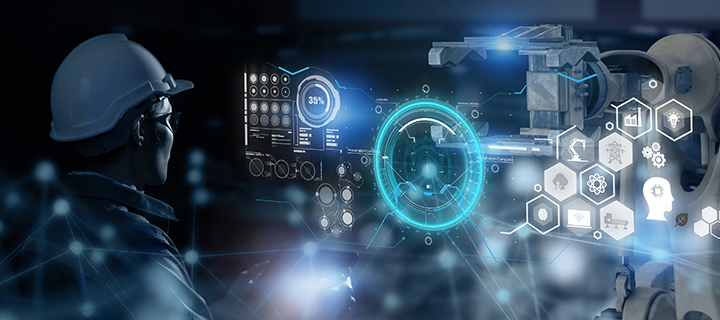
Chapter 2 – How Do Digital Twins Work?
Though the practical applications of a digital twin can vary, they can be broadly grouped into two categories: the ability to provide a replica of an existing environment and the ability to provide predictive modeling. Let’s take a closer look at these two uses to see how they work.
Capturing Reality
Any well-built digital twin should be an exact copy of a physical reality. What’s interesting about this is that the data and measurements are available for any use that may arise, including purposes that weren’t considered when the data was originally collected.
In the joint use industry, this wide range of uses is especially important because requests for attachment to utility assets are multiplying exponentially with the rollout of 5G and the related deployment of small cell equipment to densify networks. With each new request, companies must examine existing reality to determine, for example, the current condition of a utility pole, the amount of equipment already attached, the precise placement of that equipment, and any make-ready work that may be necessary to allow any proposed attachments. A digital twin could simplify and speed up this process by eliminating multiple trips to the field.
Another advantage is that even after construction is completed, new data still can be collected to update the digital twin and allow for comparison of the asset before and after new equipment was installed.
Predictive Capabilities
Perhaps the greatest advantage of a digital twin may be how useful it is for predictive modeling. In fact, numerous industries have been employing digital twins to predict the effects of various modifications or harmful events on machines and other equipment for years now. (For example, in the auto manufacturing industry, a digital twin of an automobile could be crashed repeatedly under an endless variety of circumstances, with far more variations than would be practical using physical models, at little expense.)
In the utility and communications space, digital twins enable companies to manipulate the plant by simulating a huge array of possible changes, whether intentional or accidental. Using this type of modeling, it’s easier to be proactive in managing assets. For example, when modeling suggests equipment failure may happen, the company can repair or replace the equipment before it malfunctions.
Digital twins are also useful with storm predictions. For another example, a computer load analysis on a group of utility poles could simulate storms of varying strength, showing which poles are too weak to bear the brunt of heavy winds. A digital twin of a substation and its surroundings could potentially be used to determine the substation’s susceptibility to flood damage from a nearby creek and to computer-test the effectiveness of different remedies such as levees, flood walls, and equipment reconfiguration.
Simply put, predictive analytic options are endless.
In the Field
Good data is the foundation of a digital twin. While there are many technologies available to capture accurate data, let’s review what happens when you send a technician into the field armed with a handheld device that combines measurement with photography, a technology known as photogrammetry.
Software loaded onto the device ensures that the technician captures all the necessary information about the pole, its surroundings, and any equipment attached to it, from fiber-optic cables to distributed antenna systems (DAS) and small cell units.
In this scenario, the goal would be to use the data collected to construct a three-dimensional photographic representation of the pole, complete with measurements. This will determine what kind of data is collected.
In this case, you’ll need to know the height and circumference of the pole and the distances between ground level, each attachment of cables or antenna equipment, and the distribution lines at the top of the pole. While you’re in the field, you could even find out how close the pole is to any nearby trees or buildings. Sensors in the device will record all the necessary measurements. The technician can also manually record information such as the age and height of the pole from the pole stamp.
It's this level of detail in data collection that can yield great benefits later. And with a system that syncs, the information can be immediately transferred directly from the field to the data management software back at the office.
In the Office
Analysts in the office then use software to organize the data collected from the field to begin building the digital twin. By digitally stitching together all the individual photos and measurements taken in the field, they produce a detailed, three-dimensional, measurable photo representation of the pole. And thus, a digital twin is born.
But the work doesn’t stop there. Once created, the digital twin can be manipulated and modified using additional data, accessed by various departments through a digital twin platform, and shared with contractors and other joint use partners. It also can be joined with comparable data on other poles to create a twin of a whole group or network of assets.
The Impact of Digital Twins at Work
The usefulness of digital twins cannot be overstated. They make accurate information available to everyone involved in the process of attachment requests and approval.
For example: If a company wants to place small cell equipment on several poles within a certain area to densify its network, then a digital twin of the infrastructure in that area can enable the company to examine one pole after another from the office. This helps them to identify those that have the most space remaining for additional attachments. With this type of intelligence, a company can be more strategic with its attachment requests and reduce the likelihood that the asset owner will reject the requests and delay the deployment.
Not only that, but the digital twin’s detailed measurements also help the attaching company ensure its network will be dense enough to meet its needs.
The benefits also extend to the asset owner. From their seat, the digital twin contains enough information for a reliable load analysis on each pole. Assessing the condition of a pole, and the load it’s already carrying, enables asset owners to calculate how much additional weight the pole can bear without compromising its stability. The decision to grant an application for attachment can be made with confidence. As an alternative, the company could conduct the load analysis and add it to the data record before applications for attachment are received, further speeding the approval process.
Digital twins also mean fewer trips to the field for the asset owner, attaching company, and contractors to see what make-ready work will be necessary before a new attachment can be installed on the pole, which translates into greater efficiency.
Lastly, digital twins give companies a chance to simulate any number of changes to predict the effects on individual assets and the overall plant. Let’s take a closer look at how these capabilities extend to specific applications.
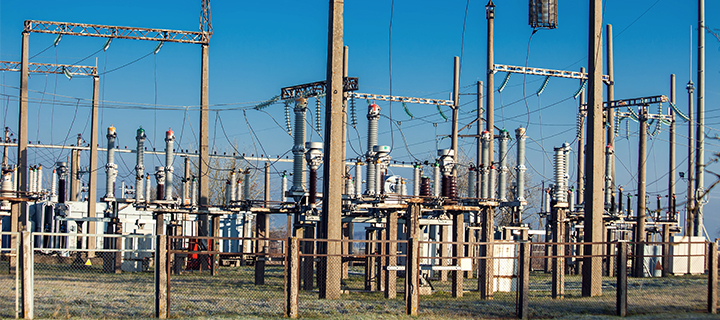
Chapter 3 – Examples of Digital Twins and Use Cases for Utilities
Although there are expenses associated with creating digital twins (not to mention a learning curve), most companies are finding that the long-term benefits outweigh the initial output. To illustrate this point, we will examine some use cases in varying scenarios.
Vegetation Management
For years, utilities have addressed the ongoing concern of fast-growing vines and foliage by in-person visual inspections of the lines and other infrastructure. This kind of detailed inspection is necessary to prevent damage to power lines and other assets from trees and tree limbs.
And it’s not just overgrowth that causes issues. During severe weather, trees and tree limbs falling on power lines cause outages and create hazards. In areas plagued by drought, contact between vegetation and power equipment has been blamed for starting some immensely destructive wildfires.
Today, digital twins are opening up new possibilities for vegetation management programs. With the collection of data using photogrammetry or LiDAR, dozens or even hundreds of measurable photo images can be stitched together to create 3D replicas of everything that was captured—including trees and other vegetation around the power lines.
Because vegetation grows differently in different geographies, the ability of the digital twin to be updated with new data collection to show any changes in both the infrastructure itself and the vegetation around it is crucial. Over time, these comparisons can be used to determine the varying growth rates of vegetation at any given point along a power line.
Predicting growth rates allows a company to create a more strategic, more efficient vegetation management program by targeting the spots where more frequent trimming is needed.
Structural Analysis & Storm Hardening
Extreme weather events have been occurring more frequently in recent years, causing some utilities to implement major storm-hardening initiatives.
Shoring up the utility plant to make it more weather-resistant is important to the safety of assets. In this case, a digital twin’s precise data and predictive capabilities help utilities to determine which poles are most vulnerable to extreme weather and to set priorities for replacement or reinforcement.
When the data is sufficient to create a digital twin of the pole, engineers can perform sophisticated analysis and put the digital twin through simulations to gauge how well it would hold up under various conditions. The digital twin will incorporate comprehensive data, such as photography, measurements, and recording of relevant observations and any information stamped on the pole. Along with the dimensions and height of the pole itself, the data includes the placement and dimensions of any equipment attached to it, such as cables, small cell, or DAS equipment.
Inventory
Any time a utility department needs to know the exact physical reality and configuration of the assets at a given location—whether they are power lines, poles, substations, or underground vaults—a digital twin of those assets is a reusable, reliable, and time-saving record.
Risk Reduction
A digital twin of an asset reduces the number of times workers must enter the site in person. The more a company reduces the need for contact between technicians and potentially dangerous equipment, the lower the potential for accidental injuries and death.
Joint Use
For busy joint use officials issuing permits to companies that want to attach equipment to existing utility assets, a digital twin is extremely convenient. The official can quickly determine whether a specific pole can safely bear the additional load and reduce the chance that permits will be denied.
As the Internet of Things (IoT) continues to expand with sensors, companies are likely to use digital twins to monitor their assets, taking advantage of their real-time updated data.
While it’s obvious that the digital twin has many applications, you might be wondering how all of these uses provide bottom line benefits.
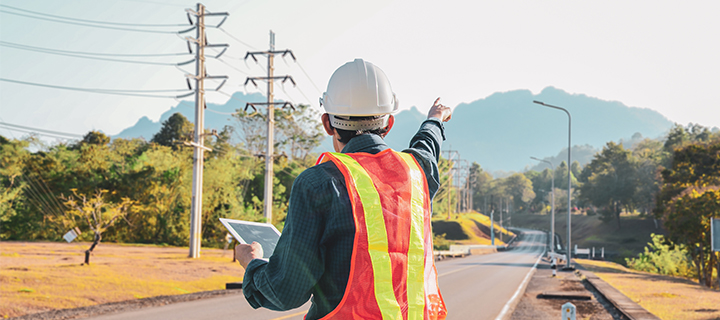
Chapter 4 – Why Is the Ability to Create a Digital Twin Important?
We’ve reviewed some of the use cases for digital twins; now, let’s recap how these uses help utilities spend money more effectively and efficiently. Here are five benefits to your bottom line:
- Storm preparation – Performing asset analysis and storm simulations on a digital twin can pinpoint vulnerabilities in the asset network, allowing companies to spend money strategically to shore up infrastructure before the next big storm hits.
- Advanced troubleshooting – A digital twin linked to sensors can predict equipment failure as much as four weeks in advance, according to PowerGrid International. This reduces the need for the expenses of an emergency response, allowing for better-coordinated replacement.
- Virtual trial and error – A company can test any number of potential changes to its equipment and infrastructure before deciding to make costly physical changes. Potential mistakes can be spotted in advance.
- Targeted trimming – Another major budget item for utilities is trimming and, in some cases, removing trees that threaten to encroach on power lines. An operational digital twin can be used to determine the growth rates of vegetation near the power lines, enabling more strategic, cost-effective scheduling of right-of-way maintenance.
- Joint use permitting – Access to a digital twin reduces the need to send a person to look at a pole every time a request for attachment is received, providing a huge cost savings.
Clearly, digital twins provide opportunities for savings and process improvement, but what about their long-term ROI? Broadly speaking, the essential benefits can be summed up with a few characteristics:
- Efficiency – Rather than make repeated trips to the field to gather different sets of data, technicians can use the digital twin to access relevant assets. Simply put, having information at the ready right when you need it reduces waste and saves time.
- Flexibility – As the saying goes: An ounce of prevention is worth a pound of cure. The digital twin concept will give utility managers the opportunity to simulate changes to their plant to assess the likely impact of those changes, eventually making it easier to avoid real-time problems. Reliable service is not just a key to keeping customers happy. It can be a deciding factor when large corporations are choosing a home for major operations. Digital twin technology could help managers anticipate and avoid problems with their plant that would normally cause unnecessary downtime if managed reactively.
- Accessibility – A digital twin can be accessed by multiple internal departments, along with any outside parties the asset owner chooses to share the data with. Greater accessibility yields better collaboration.
- Better Decisions – In addition to promoting coordination, digital twins promote smarter, data-driven decision making. For example, access to a digital twin can simplify asset owners' decisions on whether an attachment permit can be granted. They also can help the attaching company’s personnel make informed proposals for placement when preparing applications, reducing the chances an application will be rejected. Once construction is complete, the owner can collect fresh data to ensure the new equipment has been placed properly, and to update the digital twin. The advantages of this method over pencil and paper documentation include accuracy and time savings.
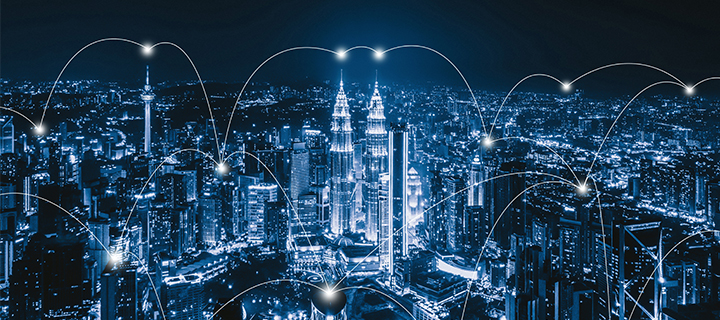
Chapter 5 – The Future of Digital Twins
A recent report from Valuates, summarized on Cision PR Newswire, stated that the global market for electrical digital twins was $2.69 billion in 2019 and is expected to reach $9.35 billion by the end of 2026, with the United States dominating the market.
Interest is highest in industries that own a lot of assets, such as utilities. These companies are finding digital twins to be a valuable tool to stay competitive, reduce downtime, keep customers satisfied, and proactively manage their assets.
As the Industrial Internet of Things (IIoT) expands, the potential for real-time asset monitoring grows as well. A digital twin is a flexible tool that can grow more sophisticated as technology evolves.
Another factor driving digital twin utilities usage is to meet ever-increasing customer expectations. Constant technological advancements in modern society have eroded the patience of the average consumer, and utility companies that have failed to improve the grid are perceived as falling woefully behind. As reported by Utility Dive, an American Consumer Satisfaction Index survey in 2015 found that satisfaction with electric power providers was on the decline. Reliability of service was one of the two major reasons cited (along with cost). Companies that customers perceived as needing to upgrade their infrastructure received the lowest consumer satisfaction ratings.
However, digital twin usage carries one caveat: A digital twin is only as good as the data that goes into producing it.
The key to creating an effective digital twin is good, comprehensive, well-managed data. Alden is ready to help with each step of the process. We have expertise in data collection, and our field app, Task Agent®, works on handheld image capture devices as well as smartphones. Alden’s asset management platform for joint use, Alden ONE, uses automated workflows to streamline data management and sharing, billing, and creating reports for internal use, as well as for regulatory agencies.
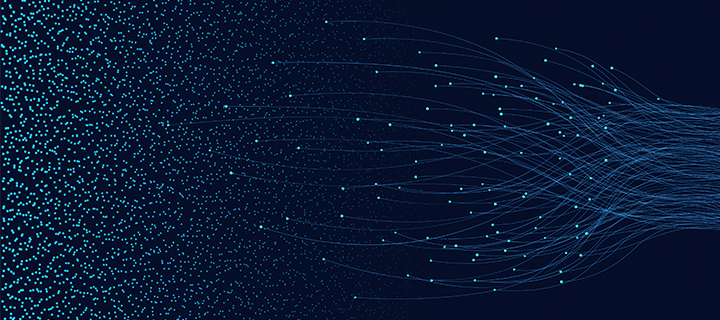
Conclusion
In this era, any business must be driven by data to get ahead. A digital twin is an excellent medium for putting data to work in the utility and communications industry. In addition to streamlining existing processes, the potential benefits of digital twins are growing all the time. The IoT promises to multiply those uses further, enabling significant advances in real-time monitoring of assets—a digital twin that’s always “live.”
To realize the full potential—and potential savings—of whatever type of digital twin technology you choose to employ, a company first must clear the data hurdle. Asset records need to be accurate, comprehensive, and properly managed.
When you need assistance, Alden is ready to help. We are all in for your success. With our nationally recognized web-based platform for joint use, Alden ONE, we can manage large amounts of data, streamline operations, simplify data sharing and other communications, and much more. We also have an expert business support team that can help you take full advantage of the benefits a digital twin can provide. Set up a meeting today to learn more.
DOWNLOAD THE PDF FOR THE FUTURE IS HERE: YOUR COMPLETE GUIDE TO DIGITAL TWINS

